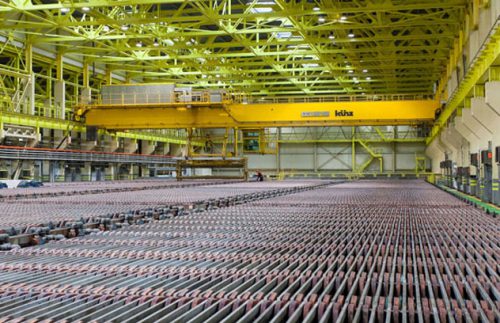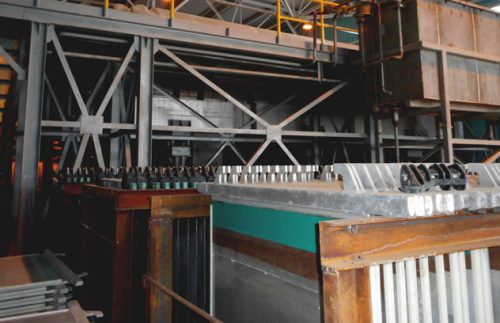Electrolysis / electrowinning process is used in production of many non-ferrous metals – copper, zinc, nickel, gold, silver as well as rare earth, such as gallium, and alkaline (sodium, potassium). With DC passing through electrolytic cell, metal from anode or even from solution precipitates on cathode giving a refined metal as result. Electrolytic cell is a stable electrical load with some parameters varying in narrow limits.
Main electrowinning processes have the following DC parameters:
- Copper 12…50kA 200…400V
- Nickel 12…50 kA 100…600 V
- Zinc 12…120 kA 700…900 V
- Magnesium 100…250 kA 200…600 V
For feeding of electrolytic cells diode or thyristor rectifiers are used, and the number of diode rectifiers is decreasing significantly, as at the time thyristor rectifiers offer the following advantages:
- Overall price and electrical losses of thyristor rectifiers are lower, than of diode rectifiers with saturable reactors;
- In thyristor rectifier transformer the number of OLTC positions is much less than in diode, with thyristor current regulation OLTC is used only to reduce thyristor firing angle (to reduce reactive power consumption) during changes in cells number. This lowers the number of OLTC commutations and significantly increase its lifetime. In ETS Engineering rectifiers OLTS is controlled automatically.
- Fully digital control system provides a high quality regulation (0.5%) and gives fully symmetrical system with equality of firing angles of different phases.
- Thyristors are able to reduce short-circuit current with firing angle shift or shutdown at very short time, that is critical during parallel operation of rectifiers at one load.


Rectifiers from ETS Engineering have the following features:
- operation 24/7;
- rectifier group layout modification to suit existing space;
- current (voltage) regulation by transformer OLTC and smooth regulation by thyristors;
- “n-1” operation mode – rectifier provides rated DC current without one semiconductor in leg;
- every semiconductor is protected by a high-speed fuse with blow indicator, giving a signal to control system;
- non-flammable insulation materials;
- fully digital control system with optical links to thyristors, accuracy 0,5%;
- advanced rectifier diagnostic system;
- easy integration with enterprise control system.
Full set of factory tests of all equipment and software significantly reduces the cost of putting equipment into operation. All documentation provided includes comprehensive instructions for operational and maintenance personnel, including electrical diagrams of all components.

